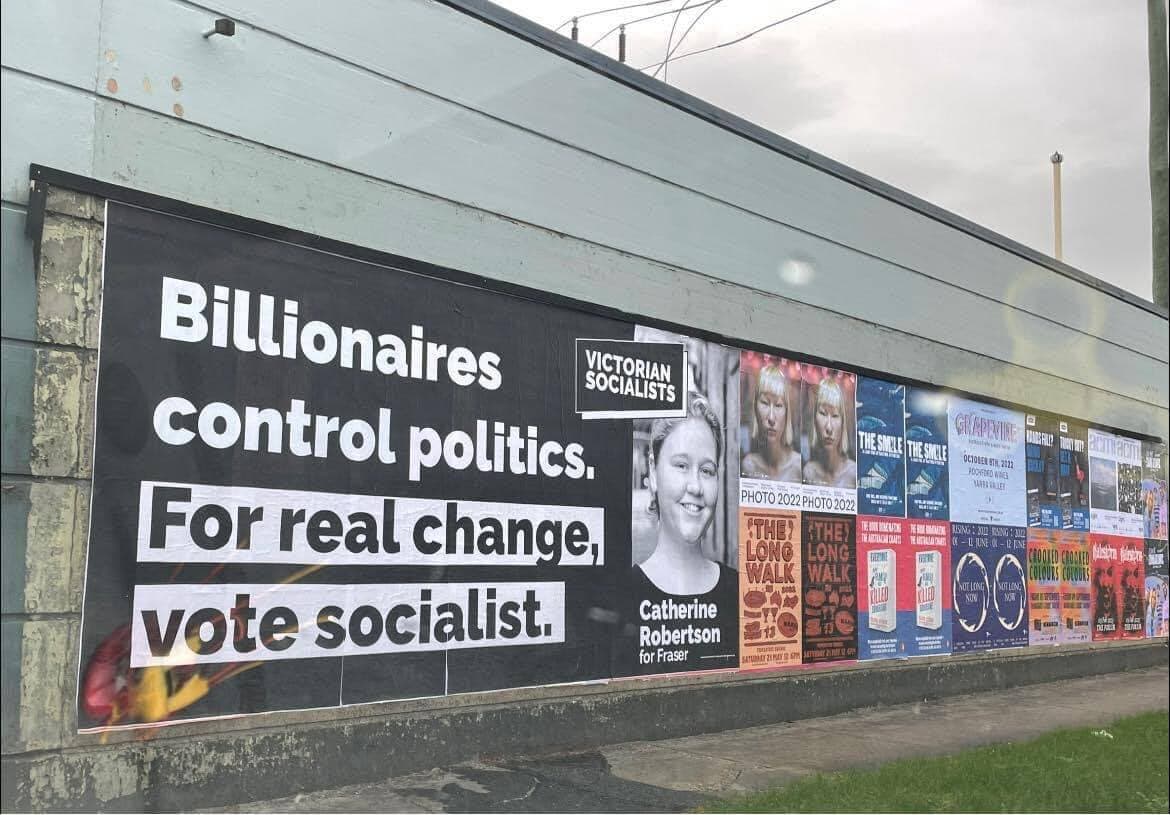Putting socialist politics on the map in Melbourne

Across the eleven lower house seats contested by the Victorian Socialists in the north and west of Melbourne, more than 22,000 voters gave us their first preference. With counting ongoing, this is easily the largest number of votes for a socialist electoral project in many years in this country.
Once again, the party’s hundreds of volunteers (700 on election day alone) showed that a socialist message of hope and resistance, which for decades has been pushed to the margins of Australian political life, can strike a chord with many thousands of people in some of the key working-class heartlands of Melbourne.
It’s important to put the 2022 results in context. In the 2019 federal election, Victorian Socialists contested just three seats. We were pleased with our results—4.6 percent in Calwell, 4.5 percent in Wills and 4.2 percent in Cooper. In 2022, campaigning in eleven seats, we were always going to be stretched. We had significantly fewer campaigning resources in Calwell, for instance—both on the booths on election day, and in advance to knock on doors.
So it’s a terrific achievement that the first preference vote recorded for Jerome Small in Calwell is currently at 4.3 percent. At a couple of booths in Roxburgh Park, we won 10 percent of the vote. At the large early voting centre in Westmeadows, where the Electoral Commission banned pretty much all meaningful campaigning for the first week (and called the cops on our campaigners when we insisted on our legal right to hand out electoral material at a polling place) we won 6.5 percent of the vote.
Other results in the north also held up well. Kath Larkin in Cooper is currently on 3.8 percent, Emma Black in Wills on 3.1 percent and Colleen Bolger in Melbourne on 3.7 percent. In Scullin—where we didn’t have the resources to do much beyond letterboxing and a presence on some booths—Cameron Rowe is on 2.9 percent. The Scullin result includes booths such as Lalor North, where 7.4 percent of people voted socialist, and Thomastown West, where we won 5.8 percent of the vote.
In the western suburbs, Victorian Socialists has never run a candidate in a federal or state election. Though our local councillor Jorge Jorquera has raised the profile of VS with his consistent work, in most areas we’re starting from scratch. So it’s great to see Catherine Robertson currently on 5.2 percent of the vote in Fraser, a really good result for all the work put in by our campaigners. Two booths in Footscray reported more than 10 percent for Catherine, with another five booths reporting more than 7 percent.
Most of our campaigns in the west consisted of letterboxing and a small presence at the polling booths, engaging with voters who had never heard of us before. Belle Gibson in Gorton is on 2.3 percent, Andrew Charles in Gellibrand on 1.5 percent, Jack Hynes in Hawke on 1 percent, Claudio Uribe in Lalor on 1.7 percent and Daniel Dadich in Maribyrnong on 2 percent.
In each of these electorates, our campaigners could find a sympathetic audience for a socialist project when we could engage with voters. For instance, about one in ten people at Deer Park voted for Belle Gibson, while nearly 6 percent of everyone who voted at Tarneit West voted for Claudio Uribe. The sheer scale of the task meant that duplicating this kind of vote across the west was always going to be a challenge, however.
Of course, these raw numbers tell only one part of the story. In those numbers are the airport workers, aged care workers, students, construction workers, retail workers, warehouse workers and all sorts who have heard a socialist message, often for the first time in their lives, and who have responded by voting socialist.
Victorian Socialists members and supporters should be proud of our efforts. We’ve put socialist politics on the map through large sections of the working-class suburbs of Melbourne’s north and west for the first time in decades—or for the first time ever, in the case of the massive growth suburbs. We’ve done this through putting hundreds of thousands of leaflets in letterboxes, through knocking on tens of thousands of doors and through countless thousands of conversations on doorsteps, in shopping malls and especially on the voting booths.
In particular, the contribution of the more than 100 campaigners from Tamil and other refugee communities who were part of Aran Mylvaganam’s Senate campaign needs a very special mention. Most of these campaigners are systematically pushed to the margins of Australian society—but over the course of the election, they played an inspirational role.
Importantly, all of this work has built a platform for the Victorian state election on 26 November, when we’ll be aiming to achieve a breakthrough for the socialist left by getting a socialist elected to the Victorian upper house. Though we have plenty of work to do in sifting through the results and planning our campaign—and an enormous amount of work in the lead-up to 26 November—the results from our federal campaign give us confidence that it’s possible to achieve this task.
Of course, though we’re proud of our efforts, Victorian Socialists is under no illusion about the state of politics in this country. We’re celebrating the appalling Morrison government being tossed out of office. And it’s great that the Greens have picked up three lower house seats in Brisbane. But with a drab Labor government under Albanese determined to look like a pale imitation of the Liberals, and a surging far-right vote, the urgency and importance of rebuilding a socialist current in Australian political life is clearer than ever.
Corey Oakley is the secretary of the Victorian Socialists.